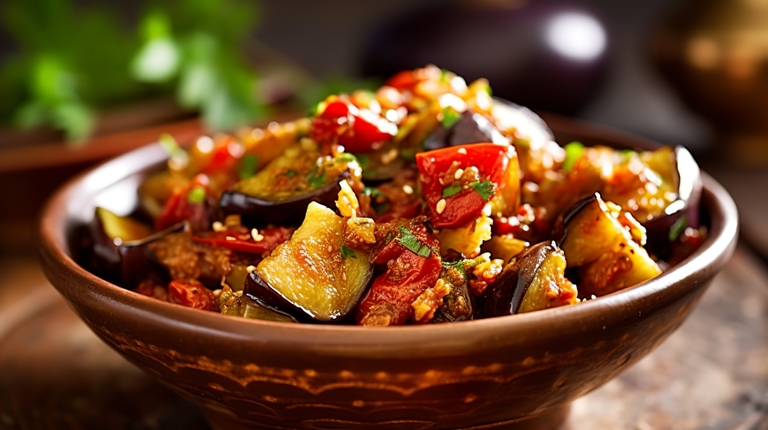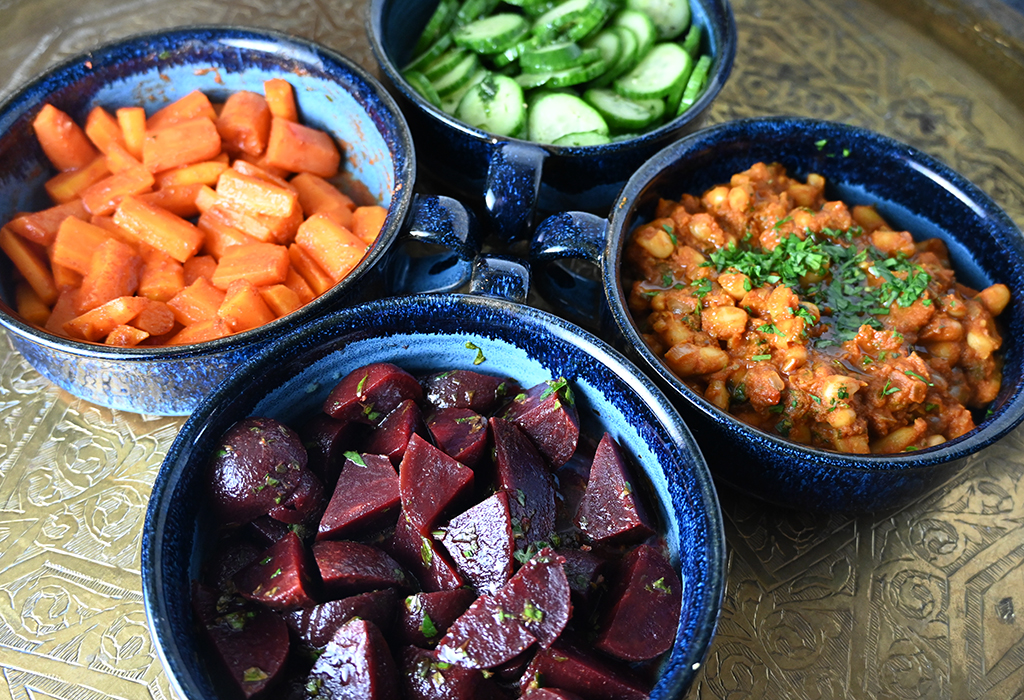Mediterranean Food: A Flavorful Journey With Practice and Taste
Mediterranean cuisine offers as an impressive intersection of practice and preference, drawing from a diverse range of cultures that cover continents. The extensive flavors and health advantages linked with the Mediterranean diet plan have actually garnered worldwide admiration, yet under its surface lies a complicated narrative of historical influences and local specializeds that require more exploration.
Origins of Mediterranean Cuisine
The beginnings of Mediterranean cuisine are deeply rooted in an abundant tapestry of background, location, and cultural exchange. This culinary tradition emerges from a region defined by its diverse landscapes, consisting of coastlines, hills, and productive plains, which have influenced its agricultural techniques and food production. The Mediterranean Container, including nations such as Italy, Greece, Spain, and Turkey, has actually been a crossroads of people for millennia, where trade routes promoted the exchange of active ingredients, methods, and culinary philosophies.
Ancient cultures, including the Greeks and Romans, considerably shaped Mediterranean foodways, emphasizing the importance of fresh, seasonal fruit and vegetables and public eating. The spread of agriculture, especially the cultivation of grapes, grains, and olives, laid the foundation for recipes that continue to be staples today. The impact of different conquerors and traders, such as the Moors and Ottomans, presented cooking styles and brand-new flavors, better improving the cuisine.
Today, Mediterranean food is commemorated not just for its taste and diversity yet also for its emphasis on healthful consuming, embodying a well balanced approach to nourishment that remains to interest worldwide palates. This historic interaction of societies and ingredients develops the essence of what we now acknowledge as Mediterranean food.
Trick Ingredients and Tastes
Mediterranean food is characterized by a vivid variety of essential ingredients and flavors that reflect the area's agricultural bounty and cultural heritage. Central to this cooking practice are fresh vegetables, fruits, and natural herbs, which give lively preferences and essential nutrients. mediterranean restaurant las vegas. Staples such as tomatoes, eggplants, olives, and bell peppers are often featured, showcasing the area's varied climate and soil
Olive oil, typically regarded as the backbone of Mediterranean food preparation, imparts richness and depth to dishes. It is complemented by a variety of natural herbs and flavors, consisting of garlic, basil, and oregano, which raise the flavors of meats, seafood, and grains. Grains, especially wheat and rice, work as essential elements, with recipes like couscous and pasta being staples throughout the area.
Furthermore, vegetables such as lentils and chickpeas not just offer protein however additionally add to the food's robustness. Making use of milk, particularly yogurt and feta cheese, adds creaminess and flavor. Fish and shellfish, abundant in coastal areas, functions plainly, with fresh fish and shellfish supplying a preference of the sea. Jointly, these active ingredients develop an unified balance that defines Mediterranean cuisine.
Regional Variations and Specialties
Varied regional variations and specializeds define Mediterranean cuisine, mirroring the unique cultural impacts, location, and background of each area. In the coastal regions of Italy, for example, seafood preponderates, with meals like Sicilian caponata showcasing a blend of eggplant, olives, and capers. Greece is renowned for its use of feta cheese, olives, and fresh natural herbs, obvious in traditional prep work such as moussaka and spanakopita.
The Levantine countries, including Lebanon and Syria, emphasize the usage of flavors and grains, with specializeds like tabbouleh and kibbeh taking center stage. North Africa, especially Morocco, sticks out for its aromatic tagines and couscous, usually enriched with dried fruits and an abundant range of seasonings.
On the other hand, the Iberian Peninsula highlights making use of cured meats and strong flavors, with Spanish paella and Portuguese bacalhau exhibiting the region's culinary diversity.
Each Mediterranean area check not only celebrates its local active ingredients yet additionally mirrors the historical trade routes and cultural exchanges that have actually shaped its food culture, developing a vivid tapestry of flavors that astounds the taste.
Food Preparation Techniques and Designs
Food preparation strategies and designs in Mediterranean food are as varied as the areas themselves, usually mirroring available components and local traditions. The heart of Mediterranean food preparation lies in its simplicity, where fresh produce, natural herbs, and olive oil take facility phase. Methods such as grilling, toasting, and sautéing are frequently utilized, permitting the all-natural flavors of the ingredients to shine.
Barbecuing, prevalent in seaside areas, instills fish and shellfish and meats with a great smoky splendor, while roasting, particularly in the Middle East, improves the sweetness of root veggies and meats. Sautéing, often made use of in Spanish and italian meals, gives a fast approach to draw out the richness of garlic and onions, working as a foundation for lots of sauces.
Stewing is another vital strategy, especially in North African cuisines, where tagines simmer fragrant seasonings and tender meats gradually, melding flavors with time - mediterranean restaurant las vegas. Cooking, especially in the context of bread and breads, holds a substantial location in Mediterranean culture, with each area boasting its very own specializeds. In general, these diverse food preparation techniques not just commemorate the ingredients however likewise mirror the ingrained look at this site culinary heritage of the Mediterranean, making each meal a testament to its abundant background

Health Perks of Mediterranean Diet
Routinely recognized for its numerous wellness advantages, the Mediterranean diet plan emphasizes the intake of entire, minimally refined foods that promote total health. This dietary pattern is rich in fruits, vegetables, whole grains, beans, nuts, and healthy and balanced fats, particularly olive oil, while encouraging moderate intake of fish and chicken and limiting red meat and desserts.
Research continually connects the Mediterranean diet plan to a selection of wellness benefits. Notably, it has been linked with a lowered threat of cardiovascular diseases, largely as a result of its emphasis on heart-healthy fats and anti-oxidants. The diet regimen is also thought to boost cognitive function and might reduce the risk of neurodegenerative conditions such as Alzheimer's.
Additionally, the Mediterranean diet plan supports weight monitoring via its concentrate on nutrient-dense foods that advertise satiation. The high fiber content from fruits, veggies, and entire grains aids food digestion and aids preserve healthy blood sugar level levels.
Along with physical health, the Mediterranean diet regimen fosters social health, as it encourages common dishes and shared cooking experiences. Generally, embracing this diet plan is not just a path to boosted health and wellness however additionally a celebration of flavors, culture, and neighborhood.

Conclusion
Finally, Mediterranean cuisine offers as a rich tapestry of practice and taste, showcasing diverse regional tastes and active ingredients. The emphasis on fresh fruit and vegetables, olive oil, and aromatic natural herbs not only improves cooking experiences but additionally promotes countless health and wellness advantages. By accepting time-honored cooking strategies and cultivating common eating, this culinary heritage remains to inspire and attach people throughout cultures, solidifying its standing as a cherished and influential part of international gastronomy.

Cooking strategies and styles in Mediterranean food are as differed as the regions themselves, often showing readily available components and neighborhood go now traditions.In final thought, Mediterranean food serves as an abundant tapestry of practice and taste, showcasing diverse local flavors and active ingredients.